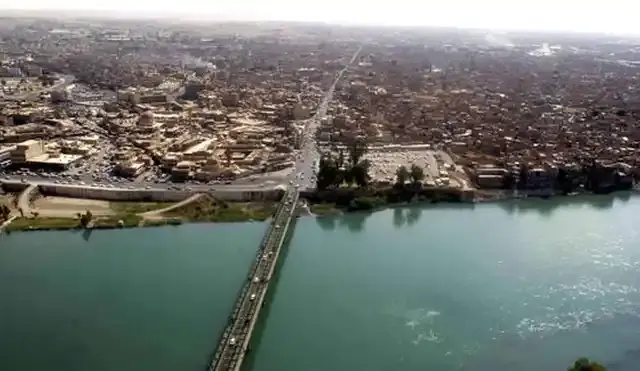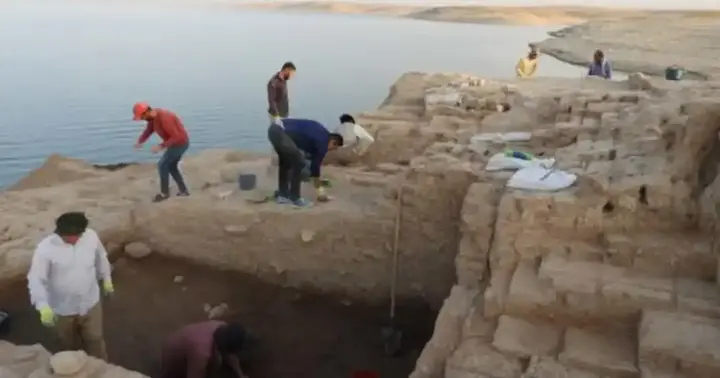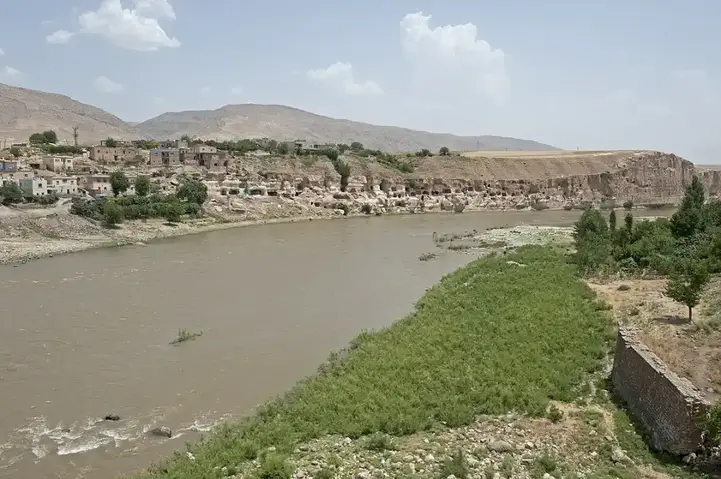The Tigris River between the past and the present
Tigris River. Sky River Companion

The mention of the Tigris River is usually associated with the Euphrates River, because they run together in a very similar course that begins with the spring from the Taurus Mountains in southeastern Anatolia in Turkey, where it comes out of Turkish territory to enter Syria and then makes its course through Mesopotamia Iraq, thus covering a distance of approximately 1,718 km and eventually meets the Euphrates River to unite together, forming the Shatt al-Arab and from it to pour into the Arabian Gulf.
Show key points
- The Tigris River originates in the Taurus Mountains of Turkey, flows through Syria and Iraq, and eventually merges with the Euphrates to form the Shatt al-Arab.
- Its name has historical linguistic roots, with etymologies from Arabic, Sumerian ("Edjna"), and Semitic ("Edglan") all bearing similar phonetic elements.
- The river has been central to the rise and development of numerous ancient civilizations including the Sumerian, Assyrian, and Babylonian empires.
- ADVERTISEMENT
- Dams such as Mosul Dam and Samarra Dam regulate the Tigris, but ongoing projects like Turkey’s Southeastern Anatolia project are causing environmental concerns and water shortages downstream.
- It suffered devastating historical events, most notably during the Mongol invasion when Baghdad’s libraries were destroyed, turning the river’s waters red with blood and blue with ink.
- In a significant archaeological discovery, a 3,400-year-old Mitanni city reemerged due to water recession in the Tigris caused by climate change and damming activities.
- Despite past hardships, the Tigris continues to symbolize life, resilience, and the cradle of civilization in the Middle East.
Meaning of the word Tigris

In the etymology of the language, the verb "quackery of something" means to cover it, so the river is covered with its water because of the land underneath. Although it is the Arabic meaning of the name, its Sumerian and Semitic names are also close to the same pronunciation, it is in Sumerian "Edjna" and in Semitic "Edglan".
Recommend
The Tigris River between the greatness of the past and the narrowness of the dams of the present

The Tigris River passes through three major countries: Turkey, Syria and Iraq, as mentioned above, specifically in the cities of "Besmil", "Han Kiva" and the island of "Ben Omar" in Turkey, the city of "Al-Malikiyah" in Syria, and in the most important cities of Iraq in "Mosul", "Baiji", "Tikrit", "Samarra", the capital "Baghdad", "Kut", "Madaen", "Amara", and finally "Qurna", where it is associated with its companion the Euphrates River.
There are many dams on the Tigris River, including the Dukan Dam, Darbandikhan Dam, Hamrin Dam, Mosul Dam, Dohuk Dam, Samarra Dam and other dams. Despite the fact that all these dams are already on the course of the river, the work has not yet stopped establishing and establishing new projects along the course of the river, for example, the Southeastern Anatolia project, which is being implemented by the Turkish state, although it will benefit it and its neighboring countries in many quarters, but at the same time it contributes more to accelerating the receding waters of the river and contributing to the drying up of the Iraqi lands more and much faster than normal.
The Tigris River is one of the oldest rivers in the Middle East and witnessed the beginning, peak and even end of many civilizations throughout history, starting from the Sumerian, Assyrian and Babylonian civilizations and even very important stations in history after the Islamic conquest, witnessing many milestone events in history, such as the transfer of the capital of the caliphate to Kufa instead of the city of the Messenger of God, may God bless him and grant him peace, Medina and the second capital, Damascus, to become the third capital of the caliphate in full view of Mesopotamia, the Tigris and the Euphrates at the time of The caliphate of "Ali bin Abi Talib" - may God be pleased with him.
The Tigris under the hands of the Tatars

The Tigris River was not immune from the painful events in the history of the nation, as we participated in bloody and sad events, including one of the most barbaric acts throughout history, which destroyed the original copies of many of the scientific writings and manuscripts that were located in the House of Wisdom, the largest library in Baghdad, which housed most of the books of the ancient world, until it was said that the color of the water of the Tigris River changed to red and blue because of the blood of the dead and the blue ink with which the books they looted from libraries were written. Baghdad.
The Tigris River is full of treasures

Less than two years ago, due to the receding waters of the Tigris River, a treasure appeared under the waters of the river, which is a complete archaeological city in a dazzling state in relation to the fact that it was under water for thousands of years, that city called "Zakhiko" belonging to the Mitanni Empire, which took the banks of the Tigris as its headquarters and location. The city, which is more than 3,400 years old, according to the estimates of Iraqi and German archaeologists, who in turn sent expeditions to research and study the city, its division and the monuments left by that civilization. This receding became due to the large number of dams on the river and also because of climate changes and the lack of rain and of course because of global warming that changed all the scales in the globe in general, not only in the rate of water of the Tigris River.
The Tigris River and its existence means the existence of civilization and a sense of greatness and the prosperity of life and greenery, even if it went through difficult periods that must have been witnessed and lived by those who witnessed and lived thought that it was the end, but on the contrary it was and still is the reason why the Tigris River obtained this high position among rivers and water bodies, and perhaps what we think is the end will mark a new beginning that was not taken into account.








